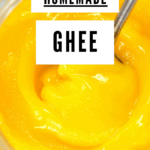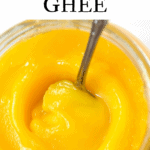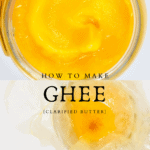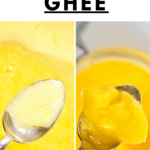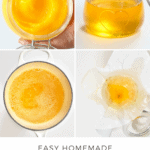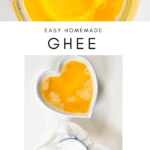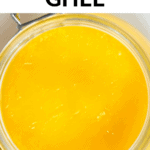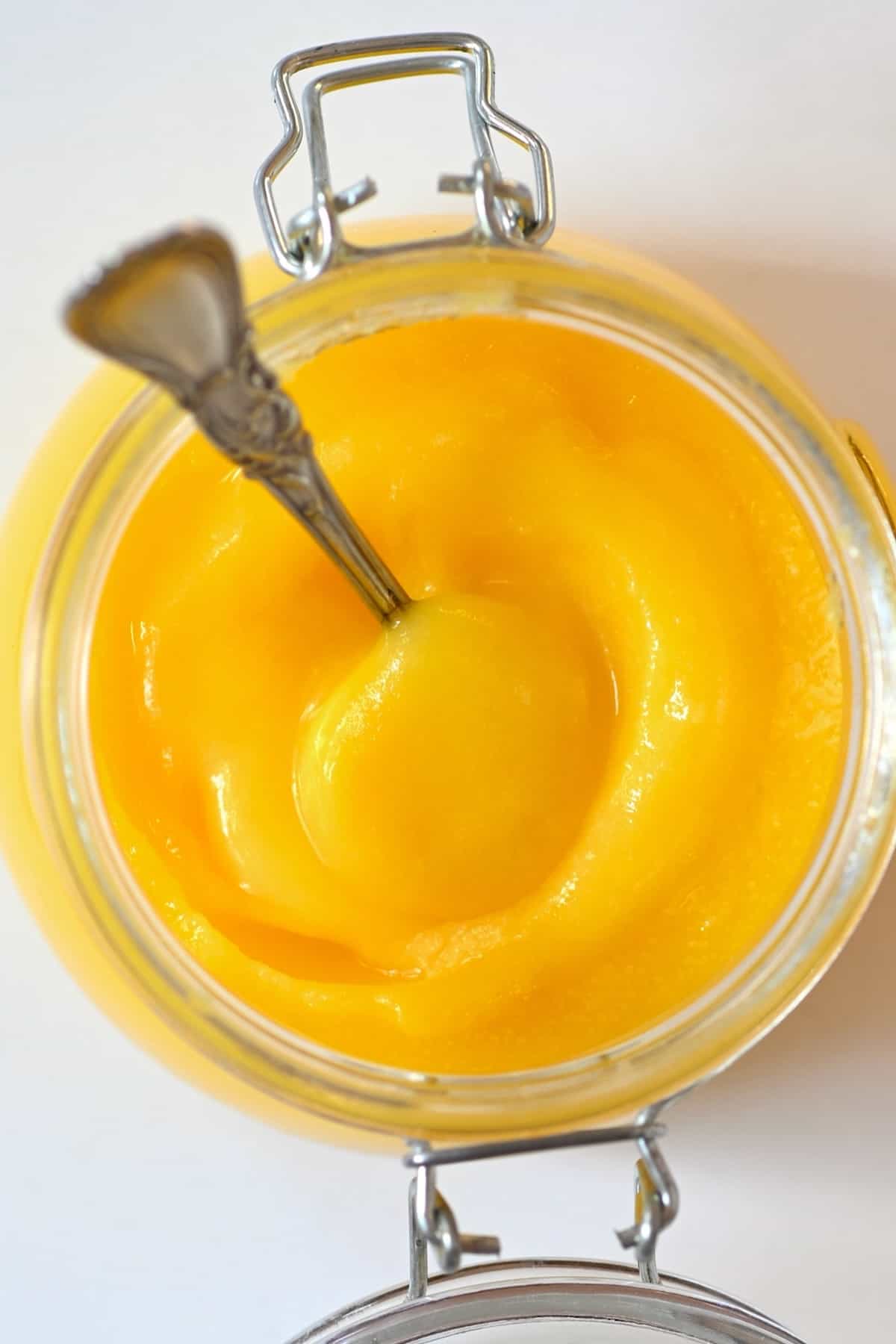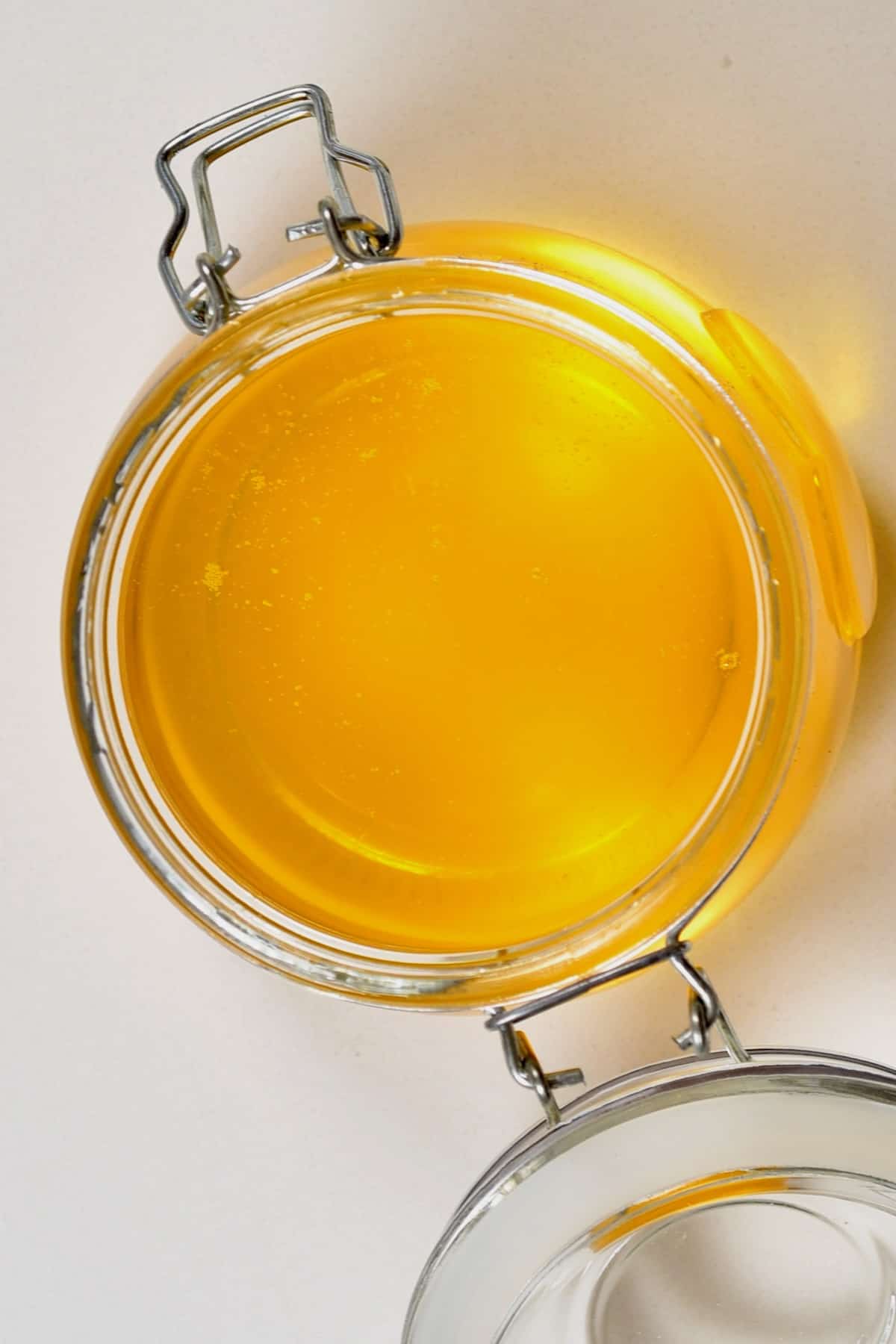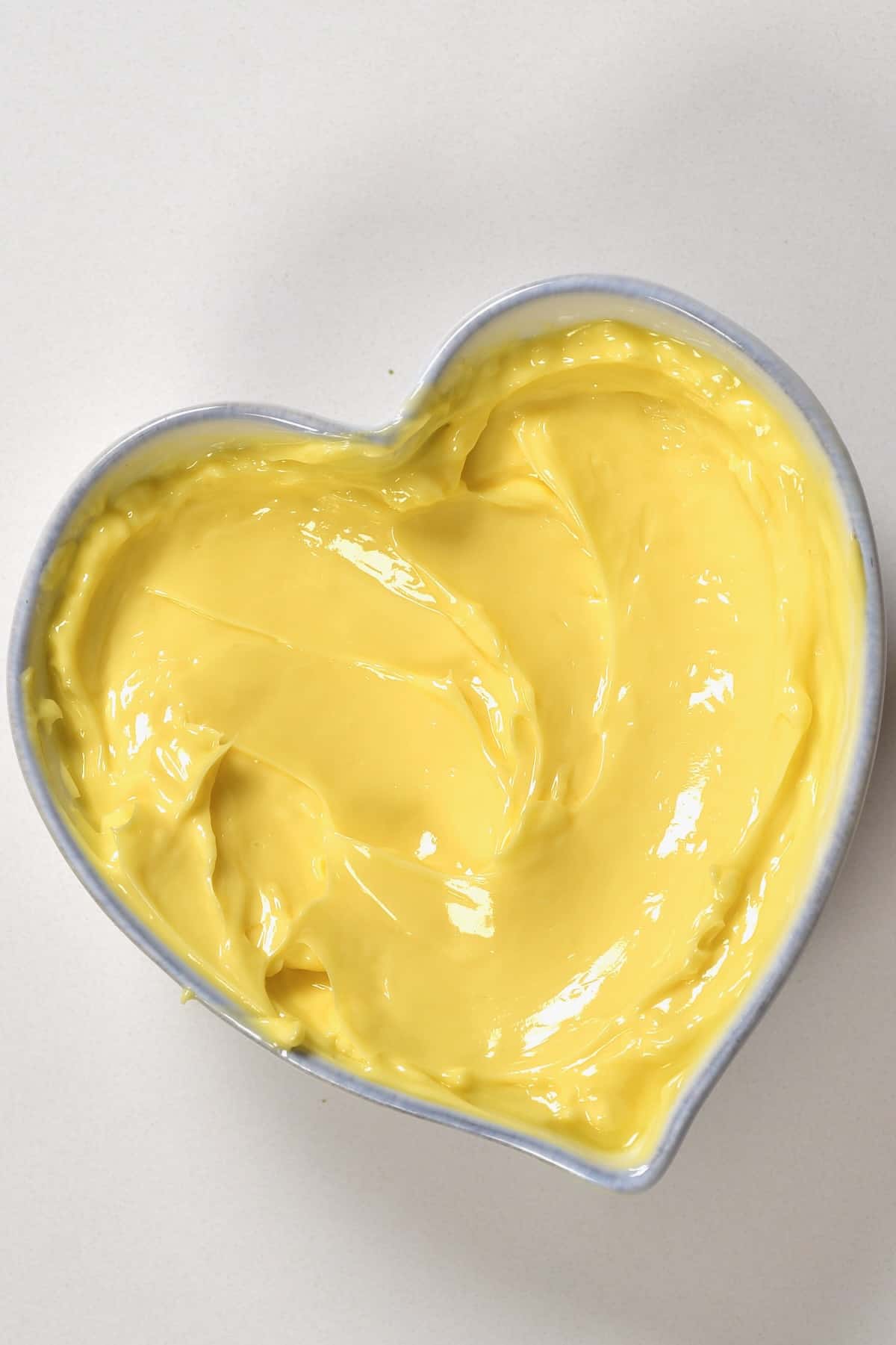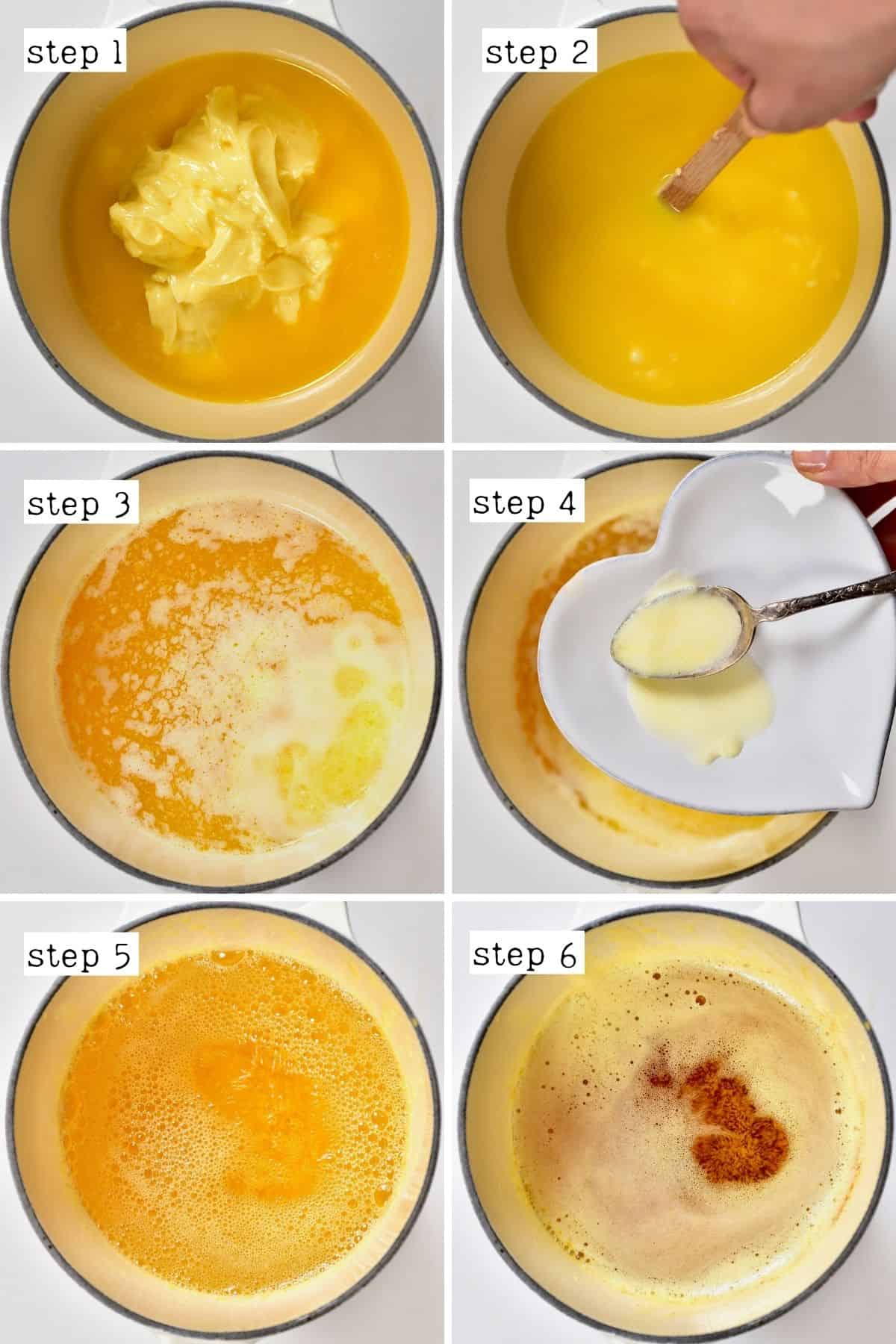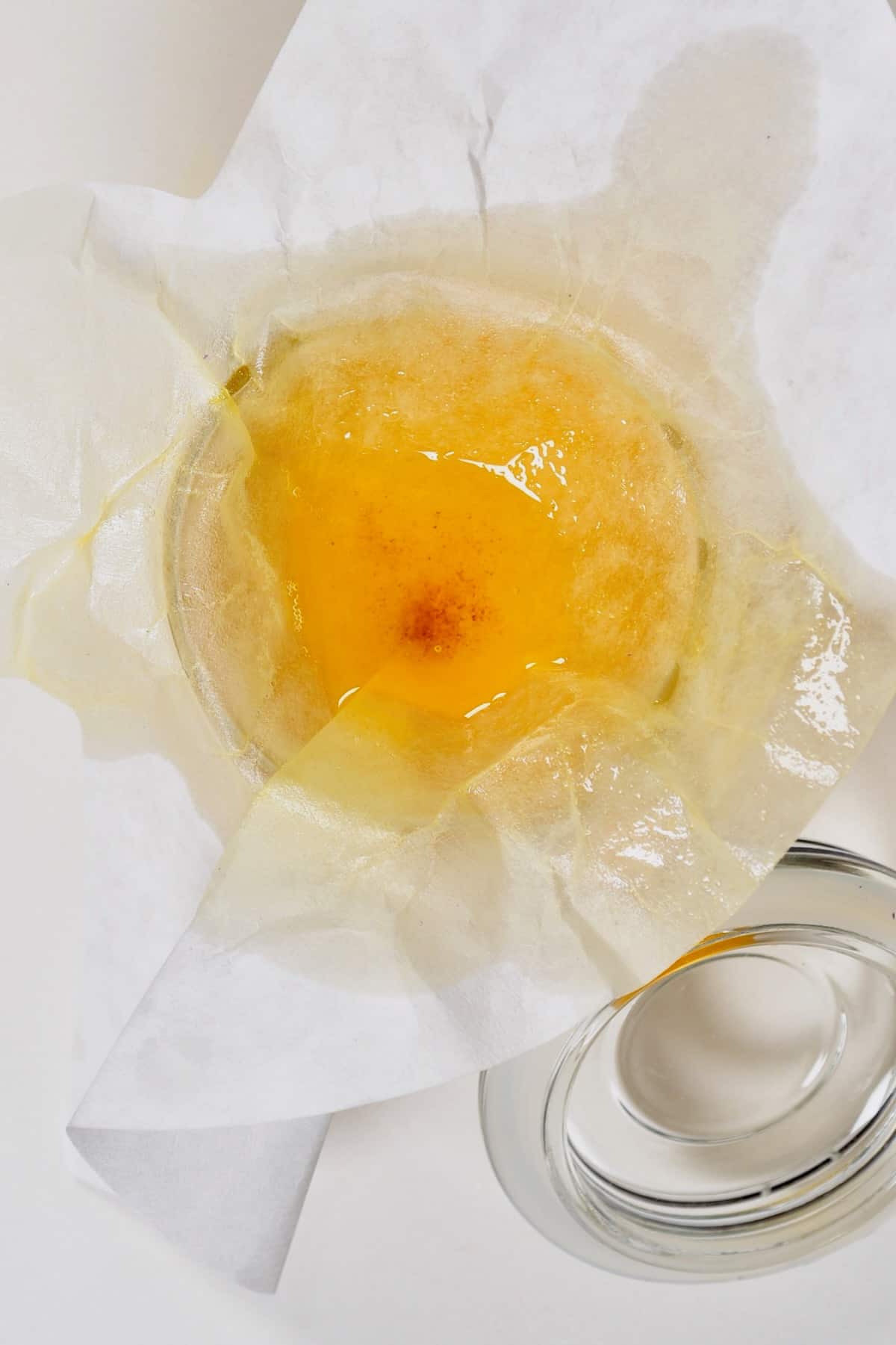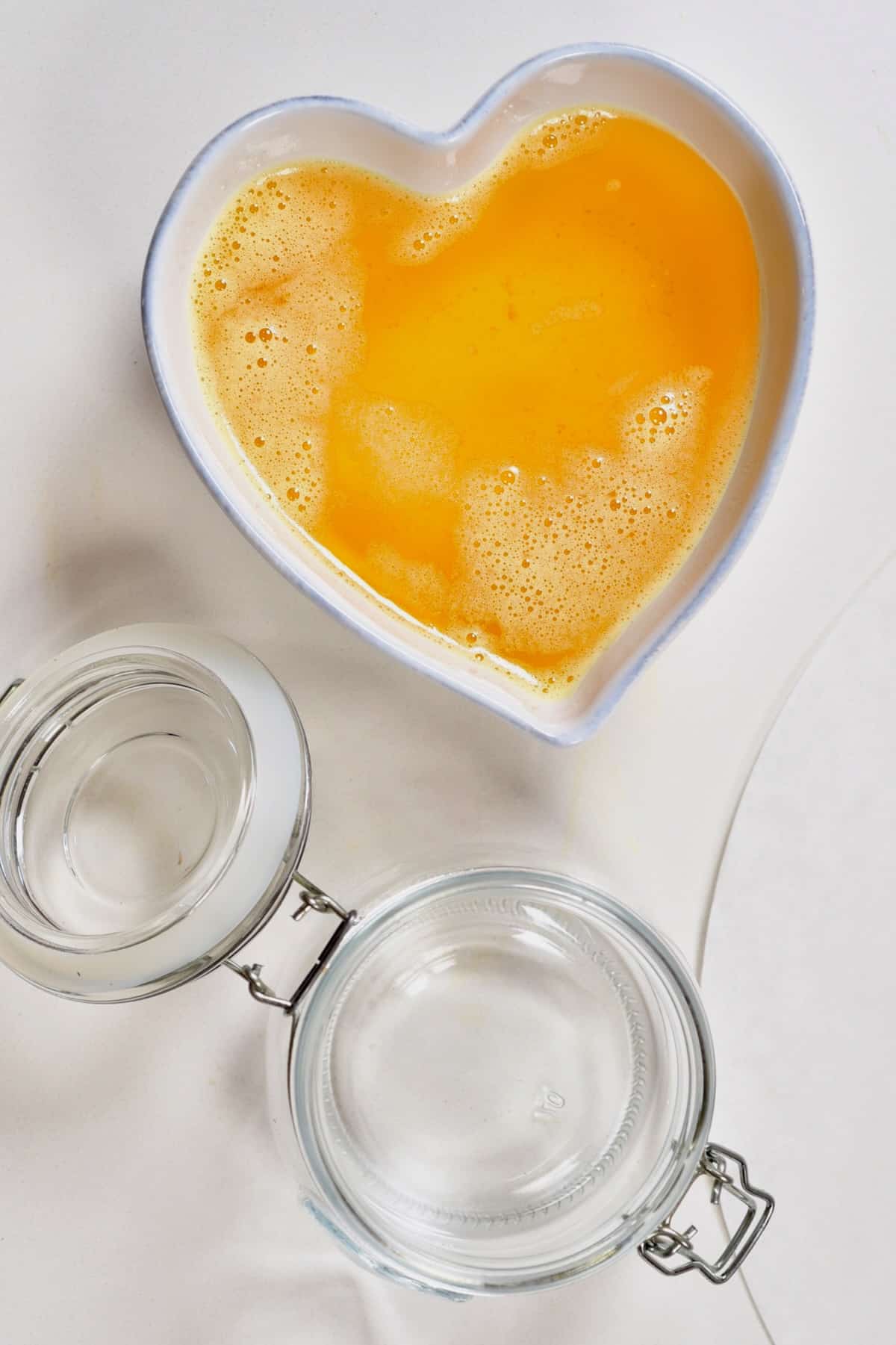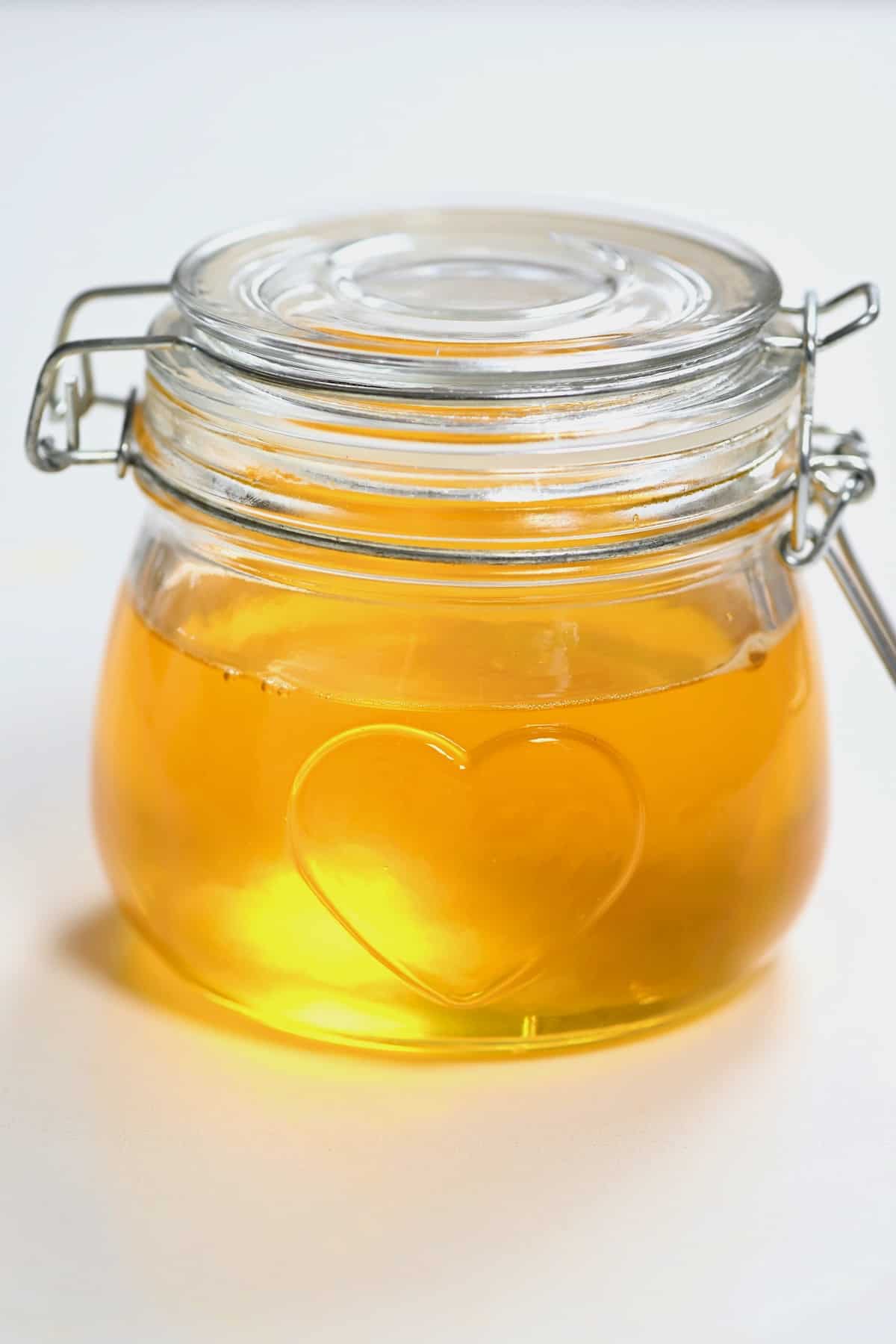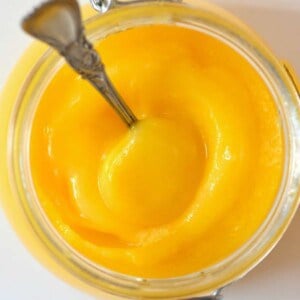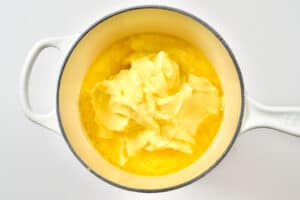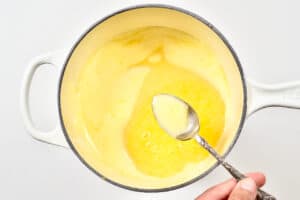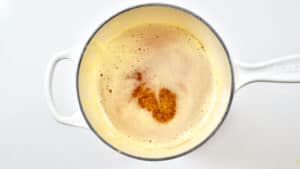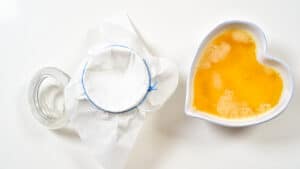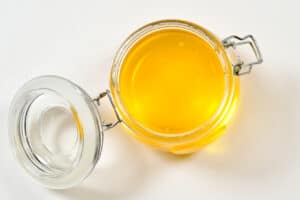What Is Ghee and How Is It Different from Butter?
Ghee, also known as “liquid gold,” is a type of nutty-flavored clarified butter that dates back 5000 years in Hindu culture. It was traditionally made with raw bovine milk or cultured butter/cream. Ghee has been used for sweet and savory traditional Indian cooking (like biryani, spread over garlic naan bread, or sweets like halwa). It’s also used as a ritual offering during prayers and in Ayurvedic medicinal practices. So, what is the difference between ghee and butter? Well, ghee is made by simmering butter gently until all the water is cooked off. At the same time, the milk proteins (“solids”) separate from the fats and settle into the bottom of the pan. Then those solids toast and caramelize to add a nutty aroma to the liquid. After straining the mixture, the golden liquid you’re left with is pure fat, aka ghee! At this point, it no longer contains lactose and casein (except in trace amounts). This makes it an allergen-friendly fat that even those with dairy sensitivities can enjoy. It also has a far higher smoke point (as the water has been removed) than butter and many cooking oils. Its spoke point is at around 465ºF (240ºC) vs. butter’s 350ºF (175ºC). This makes it a super versatile cooking fat. It’s also shelf-stable and lasts months without refrigeration.
Is Ghee the Same as Clarified Butter?
While it is a type of clarified butter, the latter refers to the butter once the water has evaporated, separating the fat from the milk solids. Ghee simmers the butter further until the milk solids start caramelizing. This produces a more aromatic, nutty flavor. Clarified butter is more often used in Western cuisine. And the other, as I mentioned above, is popular in Indian and South Asian cuisines.
What Is Ghee Made of?
The only ingredient you need to make this homemade ghee recipe is high-quality unsalted butter: store-bought or homemade butter. However, you can use salted if it’s all you have. I prefer to use organic butter made from grass-fed cows when possible (store-bought or homemade) to make the best ghee. This contains more micronutrients and immune-boosting fatty acids. However, any brand will do.
How to Make Ghee
There are just four steps to making ghee butter: heat, skim, strain, and store! The entire process takes around 25-30 minutes. Here’s how to make ghee from butter: First, transfer the butter to a heavy-bottomed pan and melt it over medium-low heat. As it melts, it will separate into three layers – top foam, middle yellow fat, and bottom milk solids. It’s the middle layer that we need. Using a skimmer/spoon, skim the foam from the top of the melted butter as it appears. Any remaining foam will eventually turn into clear bubbles as the middle layer becomes translucent. If you strain the mixture now, you have clarified butter. Continue to simmer the melted butter over the lowest heat until the milk solids at the bottom turn lightly brown and caramelize. But be careful not to let them burn. Once ready, there will be a lovely nutty aroma and flavor. This is technically brown butter and can be used now, milk solids and all. Finally, remove the butter mixture from the heat and allow it to cool for 5 minutes. Then carefully strain it into a jar. You can use a fine-mesh strainer, coffee filter, nut milk bag, or several layers of cheesecloth. This will remove the butter solids, leaving you with ghee, aka liquid gold!
What Is Ghee Used for?
Because of its high smoke point, there are plenty of options for how to use ghee butter. It’s particularly great for high-heat sautéing, stir-frying, and frying. However, it is also great for adding buttery richness to:
Indian cuisine, like curries, rice, etc. I.e., red lentil dal or chana masala, Indian desserts, like halwa and laddu. You can also smear it over roti, naan, dosa, chapati, potato roti, etc., Brush over mashed potatoes and baked potatoes, Drizzle over soups for silky richness, Drizzle over roasted vegetables – like corn on the cob, Brussels sprouts, etc., Add to hot drinks like bulletproof coffee, hot chocolate, and Golden Milk, Use as a popcorn topping, To cook scrambled eggs and omelets, For s decadent hollandaise sauce.
You can also replace it as butter in your favorite recipes, experimenting to find out what works for you.
Does Ghee Go Bad?
It can go bad over time but when stored properly, it has a long shelf life. To store it properly, once it’s fully strained and cooled, place it in a sterilized glass jar. Keep the jar in a cool, dark location away from moisture for up to 3 months. Or store it in the refrigerator for up to 12 months. If frozen, it can last indefinitely. Though I’ve kept it for 2 years at the most. Make sure to always use moisture-free, clean utensils when scooping ghee from the jar. If it starts smelling slightly “off,” you can often still “save” it by scraping off the top layer. Then transfer the remaining amount to the fridge/freezer. Like coconut oil, ghee is solid when chilled but melts to a liquid above room temperature.
More Indian Recipes
Homemade paneer Garam masala Mango Lassi Authentic masala chai Unrefined cane sugar (Jaggery)
If you try this ghee recipe, let me know how it goes in the comments below. I’d appreciate a recipe card rating and would love to see your recipe recreations – tag me on Instagram @Alphafoodie!
